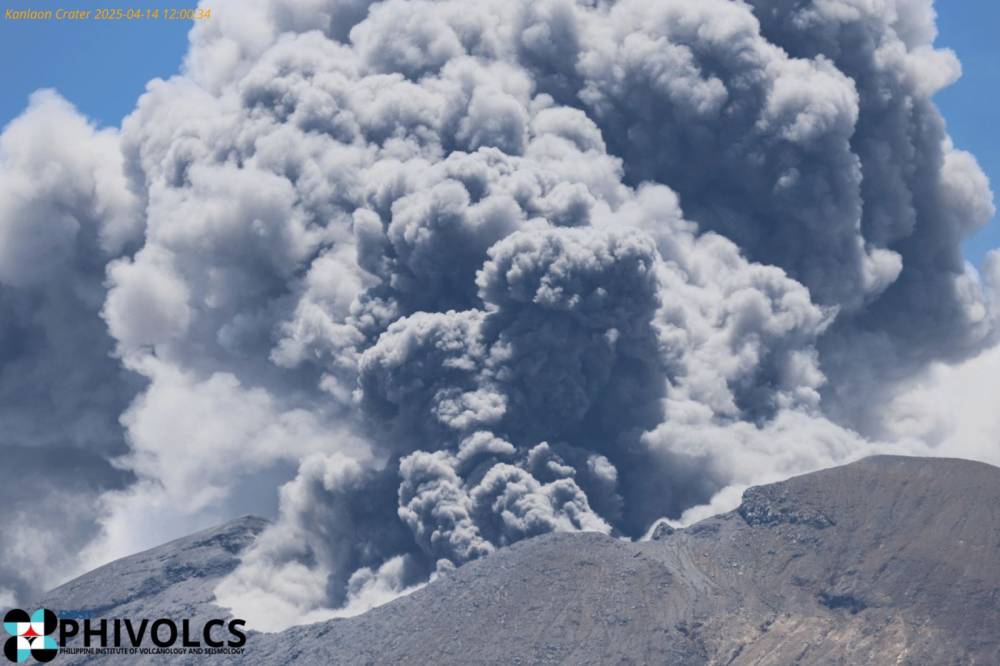Kanlaon building up for a major eruption

BACOLOD CITY—The recent hours-long ash emissions and minor explosive eruptions at Mt. Kanlaon are all indications that the volcano is preparing for a major eruption, according to a Philippine Institute of Volcanology and Seismology (Phivolcs) official on Tuesday.
“There could either be a voluminous lava eruption or a highly explosive worse case eruption,” said Ma. Antonia V. Bornas, Phivolcs Volcano Monitoring and Eruption Prediction Division chief, in a phone interview.
Mt. Kanlaon had three ash emission events, 33 volcanic earthquakes, including five volcanic tremors, and emitted 1,850 tons of sulfur dioxide from 12 a.m. Monday to 12 a.m. Tuesday.
The volcano also spewed ash for more than seven hours on Monday, which resulted in light ash fall in the cities of Bago and La Carlota.
“There was a considerable ash fall in the upper slopes of Kanlaon where there are no inhabitants,” Bornas said.
She added: “The very fine ash is usually suspended in the atmosphere for some time. The wind was strong on Monday so the ash probably landed in the sea.”
On Tuesday, Mt. Kanlaon emitted ash at 12:28 a.m., 5 a.m. and 3:22 p.m., which, Bornas said, were part of the developments towards a main eruptive period.
Phivolcs geological study based on carbon dating showed that Mt. Kanlaon had two major explosive eruptions more than 2,000 and 1,000 years ago.
“But there is no telling when the next big event will happen. We have no blueprint for this,” Bornas said. “This is the first time that we are experiencing this kind of activity from Mt. Kanlaon. This behavior is not in our historical documents.”
Day by day
According to Bornas, Phivolcs is assessing the situation day by day based on the monitoring parameters and in comparison with other monitored volcanoes, like Mt. Mayon in Albay and others worldwide.
Bornas said the unrest at Mt. Kanlaon could take a long time before it culminates. Hence, she added, their recommendation for residents to stay away from the 6-kilometer expanded danger zone (EDZ) stays.
She said they understood the predicaments of displaced residents who have been living in evacuation centers for more than four months already.
As of Tuesday, there were still 1,770 families (5,673 persons) living in evacuation centers in Negros Occidental, most of whom evacuated from the 6-km EDZ after the volcano erupted on Dec. 9 last year.
“Aside from the unrest at the volcano, there is restiveness among the evacuees and even a bit of resentment at what is happening to them but again there is a lot of danger from this volcano and it’s very difficult to predict an eruption with sufficient lead time for them to be forewarned and evacuated if they are within six kilometers,” Bornas said.
She warned that “the next eruption could be potentially larger with larger hazards that could actually harm them so it is better to stay away from the 6-kilometer danger area.”
Safety first
Bornas said local officials were just ensuring the safety of residents by not allowing the evacuated families to go home.
“I don’t think any politician would like to inconvenience people unnecessarily. It’s actually to the credit of politicians who enforce evacuations and other safety measures even though they know that this can politically harm them,” she said.
Negros Occidental Gov. Eugenio Jose Lacson on Tuesday said they would not be sending home the evacuated families for as long as the volcano remains under Alert Level 3 (high level of volcanic unrest).
He said the province has enough funds from the national government and its 2024 budget to feed the evacuees for another month.
Lacson said they might have to use its quick response fund from its 2025 budget to serve the evacuees’ needs when the P50 million from the Office of the President runs out.
Office of Civil Defense Administrator Ariel Nepomuceno last week said Malacañang will be releasing P63 million more to local governments affected by the eruption of Mt. Kanlaon.

















